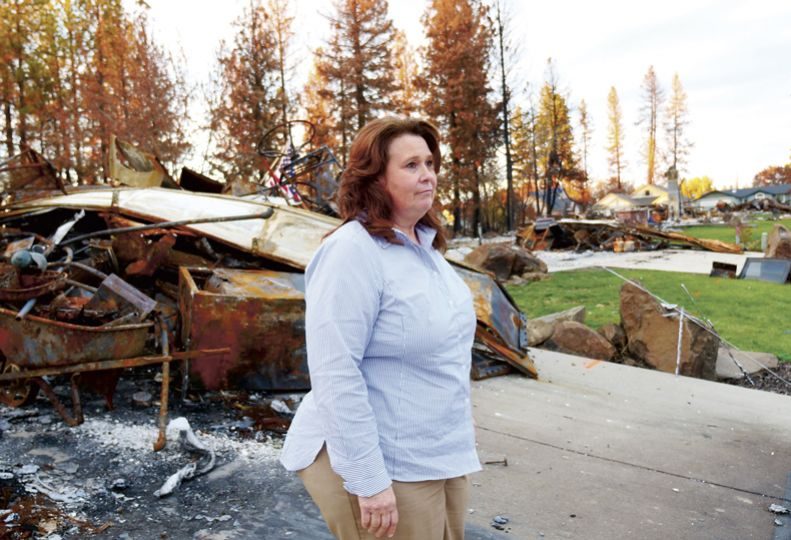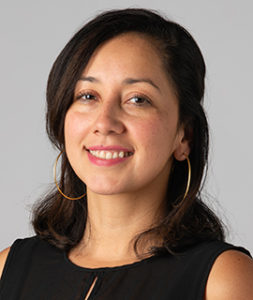
Home » Re*Imagine Medical Lake steps in for wildfire victims
Re*Imagine Medical Lake steps in for wildfire victims
Nonprofit pivots focus to residents devastated by summer's Gray Fire

October 26, 2023
In the aftermath of the Gray Fire that destroyed 240 homes in and around Medical Lake over the summer, Re*Imagine Medical Lake has partnered with the city, churches, businesses, and other nonprofits to coordinate resources available for the victims, says president and founder, Gerri Johnson.
Sonny Weathers, Medical Lake city administrator, says the nonprofit is an established organization within the community that can deliver aid at a faster pace than government can.
“They’re a great community partner and an added value,” he says. “They’re already organized and pivoted to provide and (disperse) a funding mechanism.”
Re*Imagine Medical Lake has dispersed a total of $15,000 for immediate needs to displaced families in addition to gift cards, furniture, and other donations. Of the total, $10,000 was donated by Liberty Lake-based STCU, specifically to be given to the 17 farmers who helped save property during the fire, and the rest came from individual donors.
“(They) got out and used all of their own resources, disked, plowed, and worked their tail ends off to help save whatever they could save,” she says.
In the aftermath of the fire, $1.2 million was raised through Spokane-based nonprofit organization Innovia Foundation. Re*Imagine Medical Lake has been selected to disperse those funds per guidelines set through the Spokane County Long Term Recovery Group, which was formed shortly after the fire, says Johnson. Of the funds committed, $900,000 has come through.
“I think that the confusion probably has been that people hoped that it would go directly to homeowners,” she says. “It has not been disbursed yet.”
In September, the Washington state Department of Commerce and the governor’s office committed $5.4 million to help with the recovery efforts of the Gray Road Fire and the Oregon Road Fire, which occurred around the same time and impacted the rural community of Elk, located in north Spokane County.
Johnson says Re*Imagine wasn’t selected to coordinate the Oregon Road Fire recovery efforts, and those details are being discussed through the Spokane County Long Term Recovery Group.
The wildfire destroyed 54 homes within the Medical Lake city limits and had an economic impact of $18.5 million, says Weathers. Furthermore, the Gray Fire has left a lasting impact on the city’s public parks and visitors to Medical Lake as well as wide-ranging environmental damages, he adds.
The damage done to the unincorporated areas of Spokane County surrounding the city are still being calculated, he says.
The goal for the city of Medical Lake is for the recovery to take between two and three years, says Weathers. However, he cautions it could take up to five years.
The wildfire began about 15 miles southwest of downtown Spokane on Aug. 18 and burned about 10,000 acres of land, 240 homes, 170 buildings, and displaced over 1,000 people, says Johnson.
One death was attributed to the fire, Johnson’s 86-year-old cousin-in-law, Carl Grub who it is believed was overcome by smoke and flames as he was driving through Waterfront Park, she says.
Almost half of homeowners—118—still are unregistered with the American Red Cross, impeding them from receiving aid, says Johnson, who is part of the Spokane County Long Term Recovery Group that’s charged with building the data to assist the displaced.
Such efforts involve tracking down important information such as the homeowner’s insurance status.
However, putting together that information has been slow, as many families have moved several times around the county since losing their homes.
“I have talked to so many homeowners who have gone from place to place to place after the fire,” she says. “There has been so much instability in their lives. So I know when they become irritable or emotional, I know that there’s so much more behind what they’re saying or doing.”
Johnson says the American Red Cross was scheduled to move into the Cornerstone Building, at 107 E. Lakeside, at the southeast corner of Lake and Lefevre streets on Oct. 18 for a period of two weeks.
The Red Cross workers will be available from 9 a.m. to 6 p.m. to help register the remaining homeowners displaced from the Gray Fire, as well as the Oregon Road Fire.
Re*Imagine Medical Lake was founded in 2016 by Johnson and four other community members. Ben Cabildo, founder of Spokane-based AHANA, was the organization’s first president. The organization currently has eight board members and is made up entirely of volunteers.
While the nonprofit doesn’t have a formal office, Johnson co-owns the 3,700-square-foot Cornerstone Building, which houses her vintage retail store, Farm Salvation, in the half of the building facing Lafevre Street. The other half faces Lake Street and has storage and meeting space that’s used to take in donations, meet with business and community members, and plan events.
The extra space has come in handy, says Johnson.
For example, part of the building was a florist shop with a walk-in cooler in the 1970s, she says. When she recently received a call from Spokane Valley-based Fo(u)r Roots LLC, which creates boxes of farm-fresh fruits, vegetables, and proteins, about taking in some extra boxes for those in need, she was excited to be able to accept 132 boxes of food.
“Oh, it’s been a huge blessing,” she says. “We’ve had homeowners coming and picking them up.”
The mission of Re*Imagine is to revitalize the small near 5,000-person community through economic development, events, and festivals such as the annual Founders Day event that takes place every third week of June and features a parade, market, and other attractions.
While the organization is still dedicated to creating these types of events, the response to the Gray Fire has reconfigured its energy and focus, she says.
For example, Re*Imagine currently is seeking volunteers to remove 10,000 trees that were burned by the fire. Through the month of October and into November, Re*Imagine is coordinating Gray Road Fire Clean-Up Days and seeking volunteers to fell and limb burned trees and remove and pile large limbs and brush.
Johnson credits Spokane-based Avista Corp., which has been working to remove trees, but estimates the project will require about 500 volunteers to complete before the start of winter.
“Our volunteer work prior to this was … a day here or there,” says Johnson. “This is now a new concerted effort where we’re saying, yes, we need you.”
The first couple of cleanup days require use of heavy equipment and moving large trees, while the last day of cleanup should be smaller limbs and brush, she says.
As aid from the community and state begins to trickle in, other factors such as insurance and federal assistance have been slow and less promising, says Johnson who met with Gov. Jay Inslee early in the month to request Federal Emergency Management Agency aid from the Biden administration.
“We have not received FEMA assistance,” she says. “When you hear of natural disasters, usually you hear FEMA has been deployed (after) hurricanes, earthquakes, tornadoes. Which one of those do we have? We don’t have any of those; that’s the problem.”
As fires are becoming more frequent, Johnson says she is working to incorporate the Spokane County Long Term Recovery Group into a 501(c)(3) organization that can be activated in the future in the event of another disaster within Spokane County.
The organization currently represents Medical Lake and Elk, and is made up of various representatives, including Avista, Innovia Foundation, Medical Lake Mayor Terri Cooper, and others. It is working in tandem with local municipalities, and people on the recovery efforts and is using a national model from a city that experienced a similar natural disaster.
“It’s not a matter of if, but when,” she says.
Latest News Up Close Banking & Finance Government
Related Articles
Related Products




![Brad head shot[1] web](https://www.spokanejournal.com/ext/resources/2025/03/10/thumb/Brad-Head-Shot[1]_web.jpg?1741642753)
